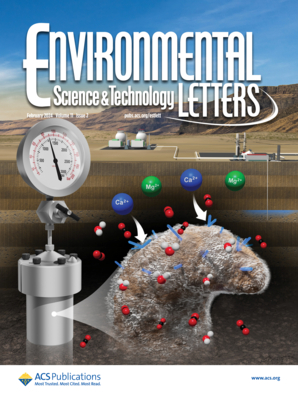妊娠、主动脉事件以及新生儿和孕产妇结局
IF 8.9
2区 环境科学与生态学
Q1 ENGINEERING, ENVIRONMENTAL
Environmental Science & Technology Letters Environ.
Pub Date : 2024-11-12
DOI:10.1093/eurheartj/ehae757
引用次数: 0
摘要
背景和目的 本研究旨在评估妊娠与主动脉并发症之间的关系,并确定相关的孕产妇和新生儿结局。方法 从台湾国民健康保险研究数据库中检索了 2000 年至 2020 年的妊娠和新生儿分娩记录。计算发病率比(IRR)以评估主动脉事件的风险因素。进行生存分析以比较有和没有主动脉事件的产妇和新生儿死亡率。结果 在 2 833 271 名育龄妇女中共发现了 4 785 266 例妊娠和 2 852 449 例新生儿。在易患期和对照期,分别发生了 57 起和 20 起主动脉事件,导致每 10 万例妊娠中分别发生 1.19 起和 0.42 起主动脉事件。妊娠被确定为主动脉事件的风险因素(IRR:2.86,P < .001)。发生主动脉事件的孕妇的 1 年孕产妇死亡率明显高于未发生主动脉事件的孕妇(19.3% vs. 0.05%,P &p;lt; .001)。母亲发生主动脉事件的新生儿晚期死亡率更高(6.3% 对 0.6%,P&;lt; .001)。结论 本研究确定了妊娠与主动脉事件之间的关联。结果显示,妇女从妊娠期到产后 1 年都有发生主动脉事件的风险。发生主动脉事件的孕妇死亡率明显高于未发生主动脉事件的孕妇。有产妇主动脉事件的新生儿晚期死亡率更高,并发症也更多。及早发现有主动脉事件风险的孕妇,尤其是那些同时患有妊娠高血压疾病、家族病史或主动脉病变的孕妇至关重要。本文章由计算机程序翻译,如有差异,请以英文原文为准。
Pregnancy, aortic events, and neonatal and maternal outcomes
Background and Aims This study aimed to evaluate the association between pregnancy and aortic complications and determine related maternal and neonatal outcomes. Methods Records of pregnancies and neonatal deliveries from the Taiwan National Health Insurance Research Database from 2000 to 2020 were retrieved. The incidence rate ratio (IRR) was calculated to evaluate the risk factors for aortic events. Survival analysis was conducted to compare maternal and neonatal mortality with and without aortic events. Results A total of 4 785 266 pregnancies were identified among 2 833 271 childbearing women, and 2 852 449 delivered neonates. In the vulnerable and control periods, 57 and 20 aortic events occurred, resulting in incidence rates of 1.19 and 0.42 aortic events per 100 000 pregnancies, respectively. Pregnancy was established as a risk factor for aortic events (IRR: 2.86, P < .001). The 1-year maternal mortality rate was significantly higher in pregnancies with aortic events than in those without such events (19.3% vs. 0.05%, P < .001). Neonates whose mothers experienced aortic events had a higher late mortality (6.3% vs. 0.6%, P < .001). Conclusions The association between pregnancy and aortic events was established in this study. The results revealed that women are at risk of aortic events from the gestational period to 1-year postpartum. Maternal mortality was significantly higher in pregnancies with aortic events than in those without. A higher late mortality and more complications were noted for neonatal deliveries with maternal aortic events. Early awareness of pregnant women at risk of aortic events—especially those with concomitant hypertensive disorders of pregnancy, contributive family histories, or aortopathy—is crucial.
求助全文
通过发布文献求助,成功后即可免费获取论文全文。
去求助
来源期刊

Environmental Science & Technology Letters Environ.
ENGINEERING, ENVIRONMENTALENVIRONMENTAL SC-ENVIRONMENTAL SCIENCES
CiteScore
17.90
自引率
3.70%
发文量
163
期刊介绍:
Environmental Science & Technology Letters serves as an international forum for brief communications on experimental or theoretical results of exceptional timeliness in all aspects of environmental science, both pure and applied. Published as soon as accepted, these communications are summarized in monthly issues. Additionally, the journal features short reviews on emerging topics in environmental science and technology.
 求助内容:
求助内容: 应助结果提醒方式:
应助结果提醒方式:


